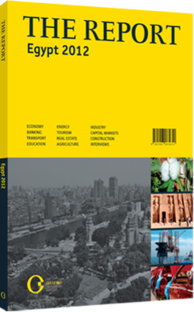Marketplace of opportunities: Online retailing shapes future commerce
As internet penetration rises and Egyptian consumers seek a growing range of brands, online retailing is expanding. While structural constraints on the segment exist, these are expected to ease in the coming years, and more retailers are tapping into the market.
GROWTH SECTOR: Estimates of the market’s size vary. A 2010 report by research and consulting group Arab Advisors calculated that Egypt’s internet users spent $2.1bn online in 2009, including bill payments. Forecasting firm Euromonitor, however, says that e-commerce in Egypt, Saudi Arabia and the UAE combined was worth just over $1bn in 2011.
As elsewhere, online retailing in Egypt offers a number of advantages for consumers and retailers alike. These include access to a wide range of goods, especially those not widely available on the domestic market; price comparison and transparency; convenience; sites’ ability to sell a variety of product categories; and sellers having the opportunity to reach remote areas. These advantages have been particularly important in the consumer electronics segment, which accounts for 60% of transactions on Souq.com, the Arab world’s largest web retailer, according to Omar Soudodi, the firm’s general manager in Egypt. Clothes and fashion brands are catching up, having lagged in the Egyptian market compared to other regions.
FUTURE TRENDS: Large regional e-commerce portals like Souq.com and Mobawaba.com are aided by the fact that major global brands like Amazon have yet to establish a formal presence in the region. As the online retail market grows, the internationals may start to move in. This will sharpen competition for the incumbents as well as further broadening choice for consumers.
E-commerce goes beyond consumers simply buying and selling products through the web; it also extends to online bill payment and other types of banking transactions. Soudodi anticipates that the “next trend” in Egypt will be greater use of online systems for consumer credit. The government could also be encouraged to allow more payments to be made online, he adds.
RESPONDING TO CHALLENGES: One issue for the sector is the low penetration of credit cards and even lower percent of cardholders who shop online; currently only 7% of the country’s 30m internet users make online transactions. Retailers have responded by offering payment by cash-on-delivery, which accounts for 70% of transactions on Souq.com. Such challenges provide a business opportunity for firms offering alternative payment processes, the most noted of which is Fawry, a Cairo-based firm that provides alternative payment mechanisms through its 13,000 terminals in banks, post offices and retail outlets nationwide via ATMs and point-of-sale (POS) machines. It also offers payment services through partner banks’ online and mobile banking arms. Fawry has the advantage that its POS terminals are accessible to those without bank accounts.
Still, e-commerce operators would like to see more direct online transactions in the future. Soudodi maintains that banks need to build greater trust in their online systems and be bolder about offering online services. Internet retailers are also engaging in campaigns to increase public awareness of online shopping and payment options, and are working with the Consumer Protection Agency to develop a “trust mark”, which would appear on approved websites. Other challenges the sector faces include complex import procedures and high tariffs, which make international sales (a major component) more difficult. Egypt’s fluid address system, particularly in informal housing areas, is also a complication. Both are challenges that online retailers cannot tackle alone, requiring government cooperation.
While online retailing is still new to Egypt, the segment has grown as more people and businesses come online. The development of e-commerce should have knock-on effects for delivery and logistics companies, an industry that could see significant growth going forward. As more retailers and organisations harness the local online market, and the use of credit cards and online payment methods grow, e-commerce infrastructure will become stronger and able to support demand.
You have reached the limit of premium articles you can view for free.
Choose from the options below to purchase print or digital editions of our Reports. You can also purchase a website subscription giving you unlimited access to all of our Reports online for 12 months.
If you have already purchased this Report or have a website subscription, please login to continue.

